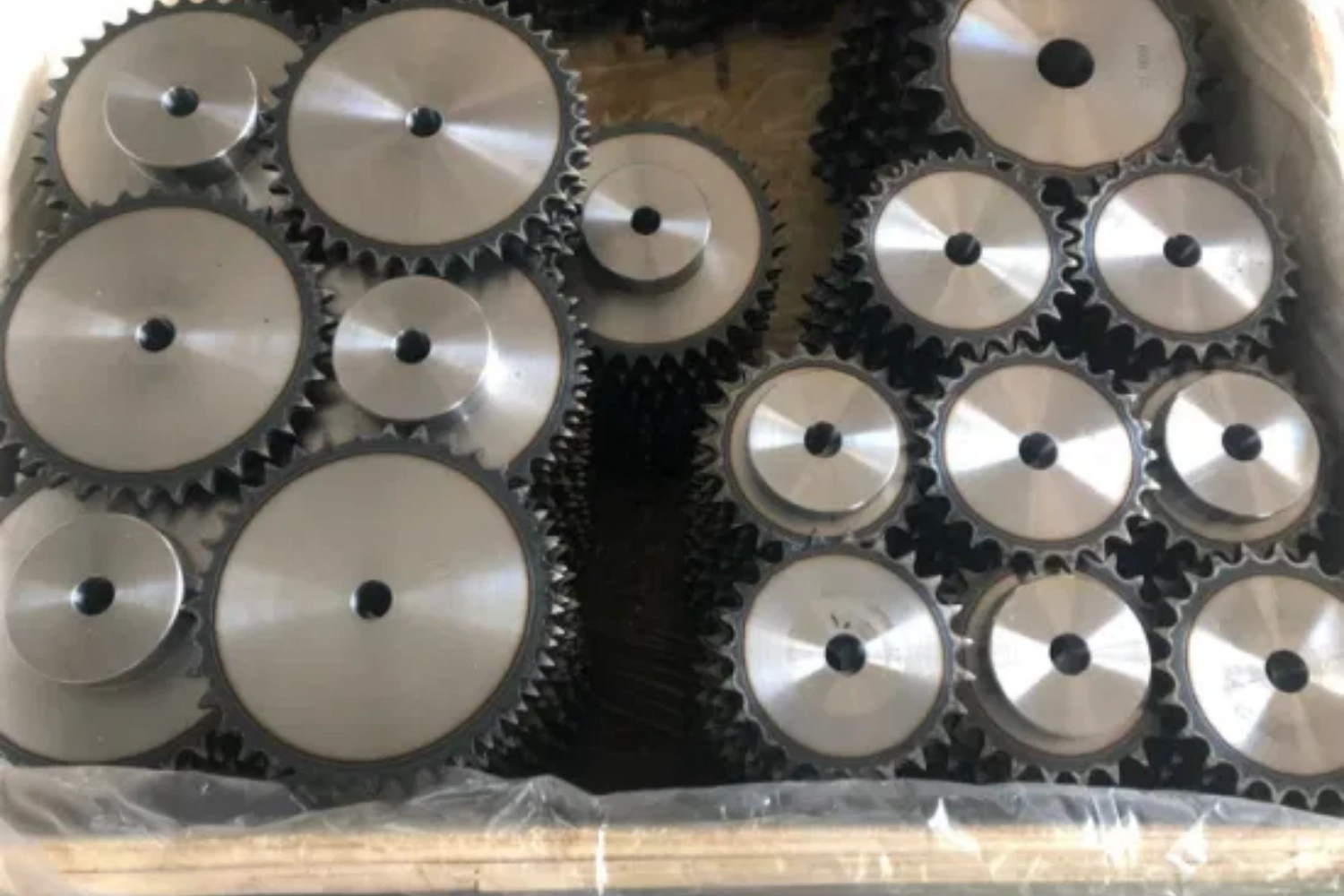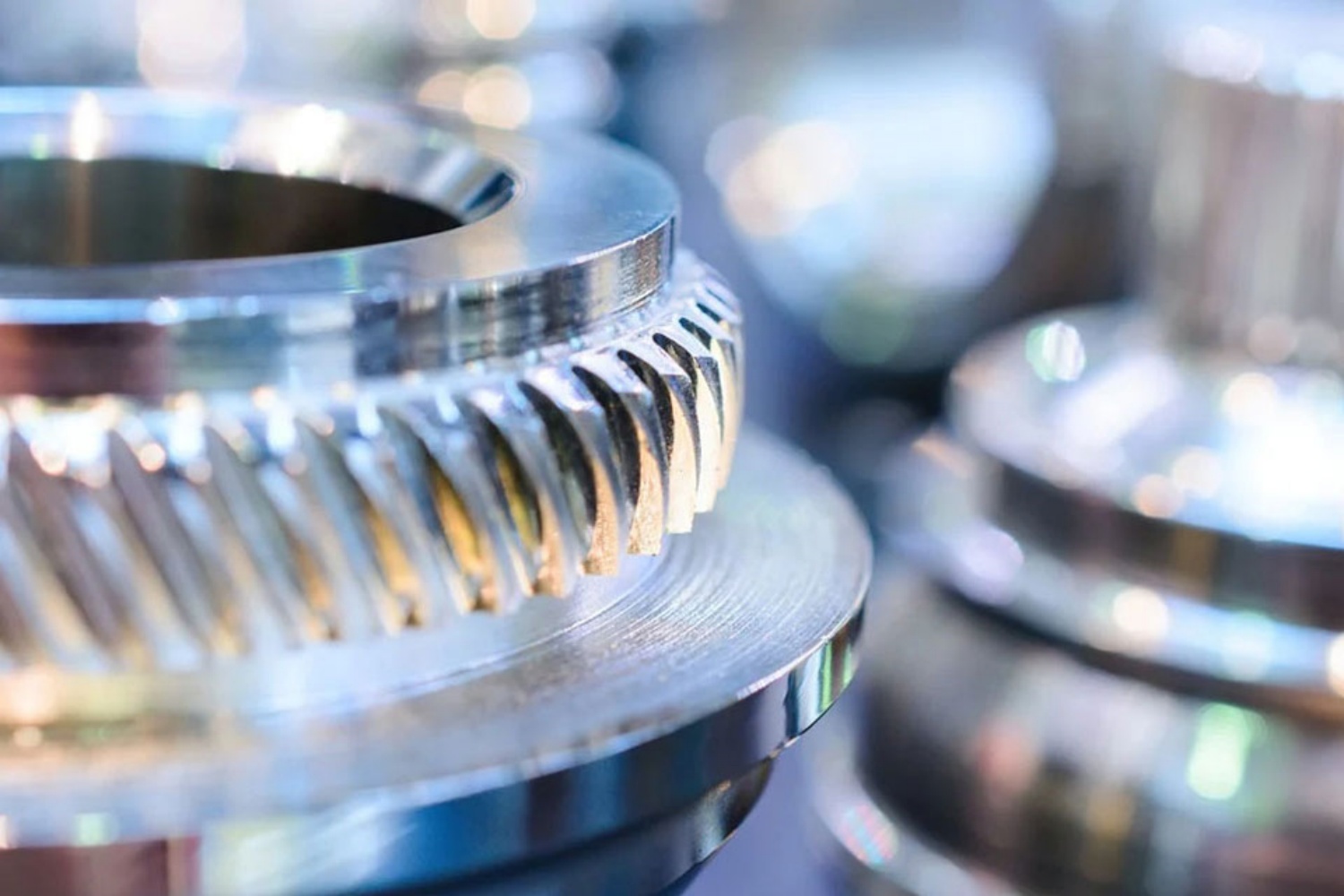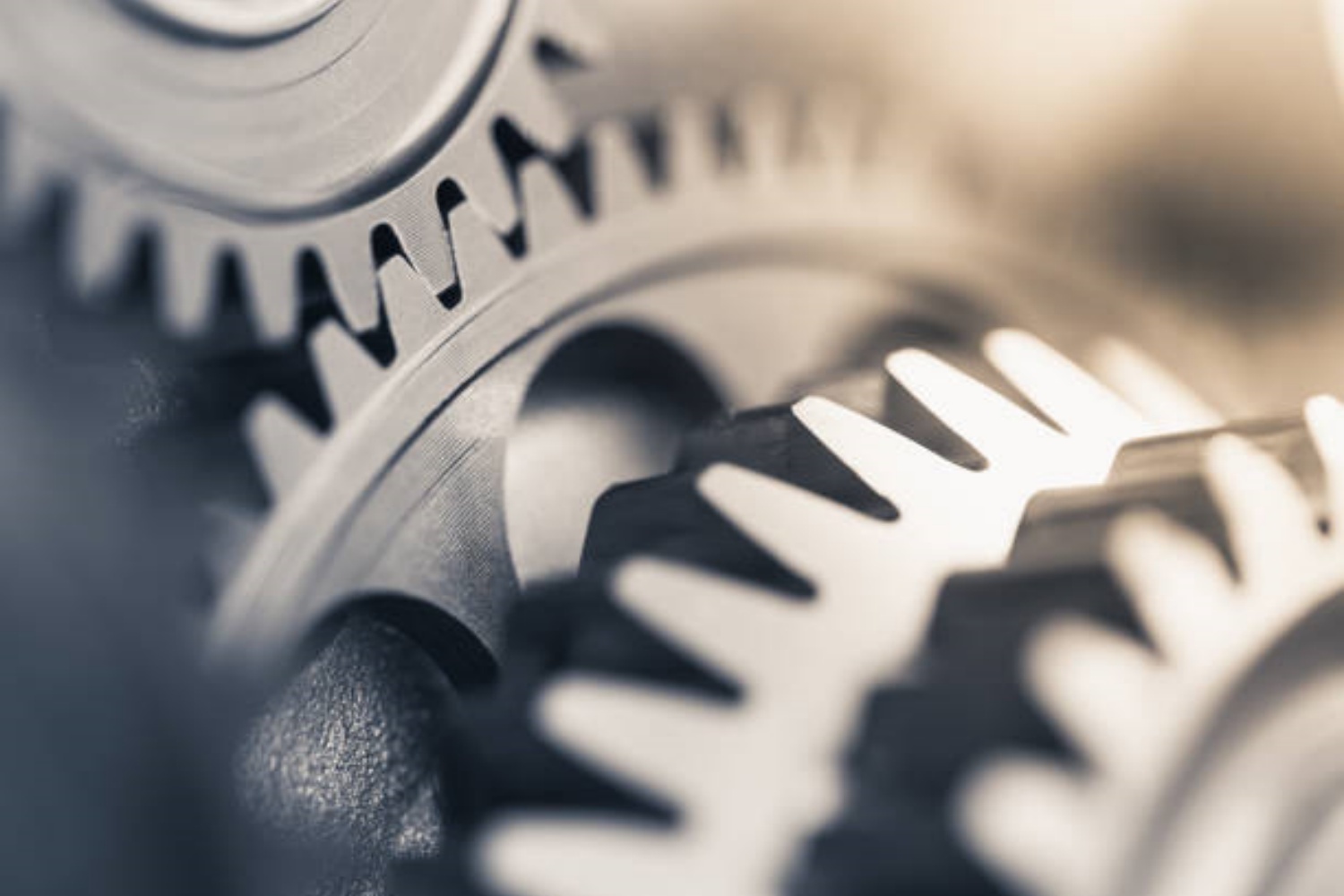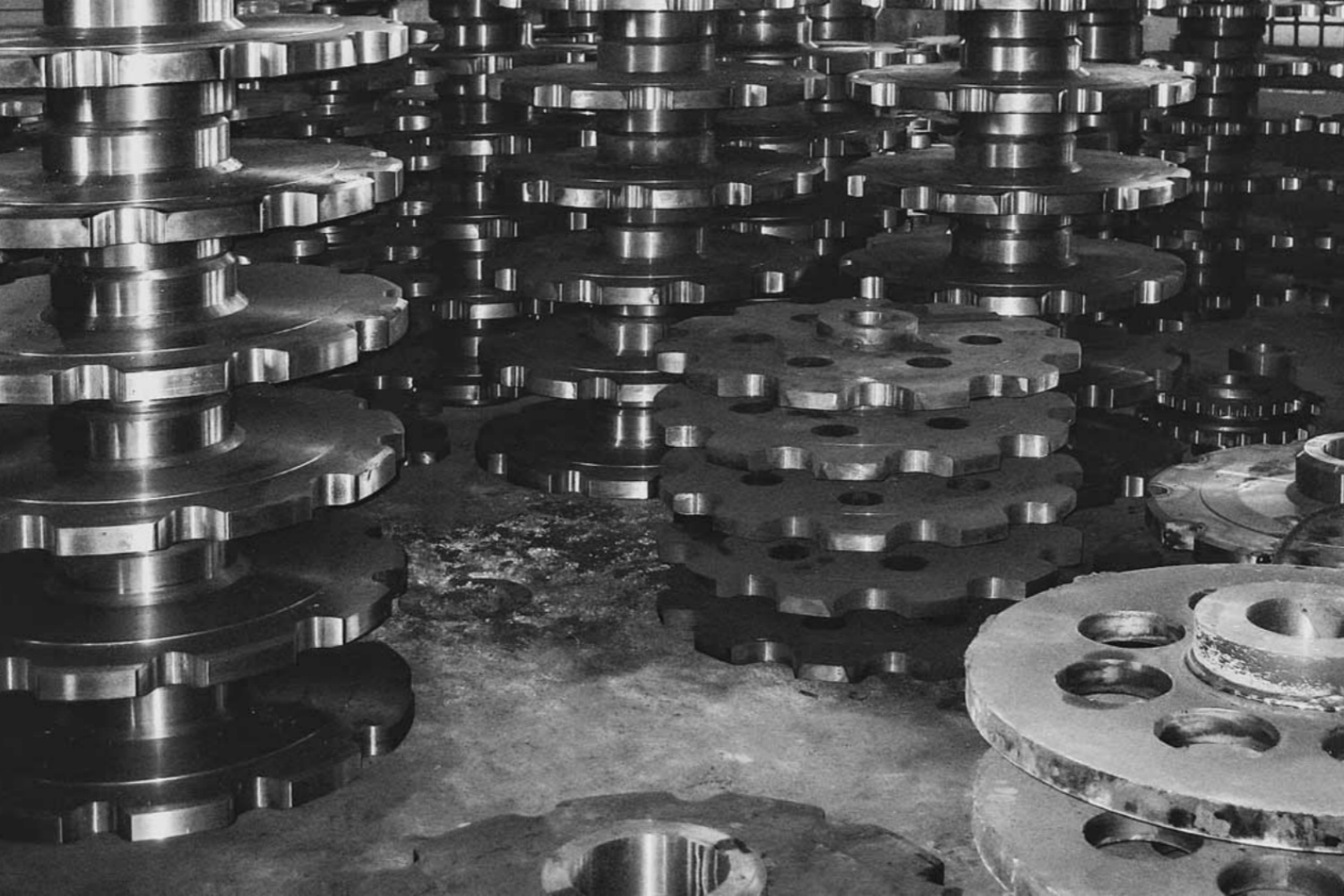Conveyor sprockets are vital in material handling systems, driving the chains and belts that transport products across various industries. In manufacturing, mining, agriculture, or warehousing, these sprockets ensure smooth, efficient, and reliable operations. Their design, function, and importance are key to optimizing productivity and minimizing downtime.
What Are Conveyor Sprockets?
Conveyor sprockets, toothed wheels that engage with conveyor chains or belts, facilitate material movement between points. Unlike gears that mesh with each other, sprockets interlock with chain links to drive the conveyor forward. These sprockets withstand heavy loads, reduce wear and tear, and ensure a stable, continuous flow of materials. They come in various sizes, materials, and configurations, tailored to meet the specific needs of different conveyor systems.
The Design and Function of Conveyor Sprockets
The design of conveyor sprockets is vital to their performance and efficiency in material handling. Key design aspects include the number of teeth, pitch (the distance between the centers of two consecutive teeth), and the sprocket’s diameter. Choosing the right sprocket size and type depends on factors like load, speed, and the operating environment of the conveyor system.
- Material Selection: Conveyor sprockets are made from various materials, including steel, cast iron, and plastic. Steel sprockets are known for their durability and strength, making them ideal for heavy-duty applications. Cast iron sprockets provide excellent wear resistance, and plastic sprockets are ideal for lighter loads and noise-sensitive environments.
- Tooth Profile and Pitch: The tooth profile and pitch are carefully engineered to ensure proper engagement with the conveyor chain or belt. A well-designed sprocket tooth profile minimizes friction and noise, while preventing premature wear, which enhances the overall efficiency and longevity of the conveyor system.
- Hub and Bore Configurations: Sprockets come with various hub and bore configurations to suit different mounting requirements. Some common configurations include single hub, double hub, and taper-lock bushings, which allow for easy installation, adjustment, and maintenance.
The Role of Conveyor Sprockets in Material Handling Systems
Conveyor sprockets serve several critical functions in material handling systems, contributing to the seamless movement of goods and materials across production lines and warehouses.
- Power Transmission: Conveyor sprockets transfer power from the motor to the conveyor chain or belt, driving the movement of materials. This power transmission transports materials efficiently, reducing manual labor and improving productivity. A well-designed sprocket ensures optimal torque and speed, reducing energy consumption and operational costs.
- Direction Control: Sprockets are strategically positioned to control the direction of the conveyor chain or belt. This directional control is essential in complex material handling systems where materials need to be sorted, diverted, or accumulated at different points along the production line. Properly designed sprockets ensure smooth transitions and minimize the risk of jams or blockages.
- Load Management: Conveyor sprockets are crucial in managing the load on the conveyor system. They distribute the weight of the materials evenly across the chain or belt, preventing excessive strain on any single point. This load management reduces wear and tear on the conveyor components, extending their lifespan and minimizing maintenance requirements.
- Synchronization: In material handling systems with multiple conveyors, sprockets help synchronize the movement of different chains and belts. This synchronization is crucial in applications needing precise timing, like packaging lines or assembly processes. Properly synchronized conveyors ensure that materials move seamlessly from one stage to the next, reducing downtime and increasing efficiency.
- Minimizing Wear and Tear: Conveyor sprockets are designed to minimize wear and tear on both the sprocket and the conveyor chain or belt. A well-maintained sprocket ensures smooth engagement with the chain, reducing friction and preventing premature failure. Regular inspection and maintenance of sprockets are essential to ensure optimal performance and prevent costly breakdowns.
Maintenance and Care for Conveyor Sprockets
Regular maintenance and care are essential to prolong the life of conveyor sprockets and ensure the smooth operation of material handling systems. Some key maintenance practices include:
- Regular Inspection: Periodically inspect sprockets for signs of wear, such as chipped or broken teeth, excessive corrosion, or misalignment. Early detection of wear can prevent more severe damage and costly repairs.
- Lubrication: Proper lubrication of sprockets and conveyor chains is essential to reduce friction, prevent rust, and ensure smooth operation. Use the appropriate lubricant for the sprocket material and operating conditions.
- Alignment Checks: Misalignment of sprockets can lead to uneven wear on the conveyor chain and sprocket teeth, reducing their lifespan. Regularly check and adjust the alignment to ensure smooth engagement and optimal performance.
- Replace Worn Components: Timely replacement of worn sprockets, chains, or belts is crucial to maintaining the efficiency of the conveyor system. Using high-quality replacement parts can enhance performance and reduce the frequency of maintenance.
Conveyor sprockets are integral to the efficiency and reliability of material handling systems in various industries. Their role in power transmission, direction control, load management, synchronization, and minimizing wear and tear makes them essential components in any conveyor setup. Understanding the importance of conveyor sprockets and maintaining them regularly can boost productivity, reduce downtime, and extend the lifespan of material handling equipment. As industries continue to evolve and demand higher efficiency, the role of conveyor sprockets in material handling will remain critical, driving innovation and improving operational efficiency.

CONTINUE READING
Related Posts
In mechanical drives, gears are essential for transmitting motion, power, and torque across various applications. Two of the most commonly […]
In the world of industrial machinery, efficiency, precision, and reliability are essential. A key component in achieving these goals is […]
In the world of industrial engineering, precision and innovation are essential to staying competitive and meeting the ever-growing demands of […]





